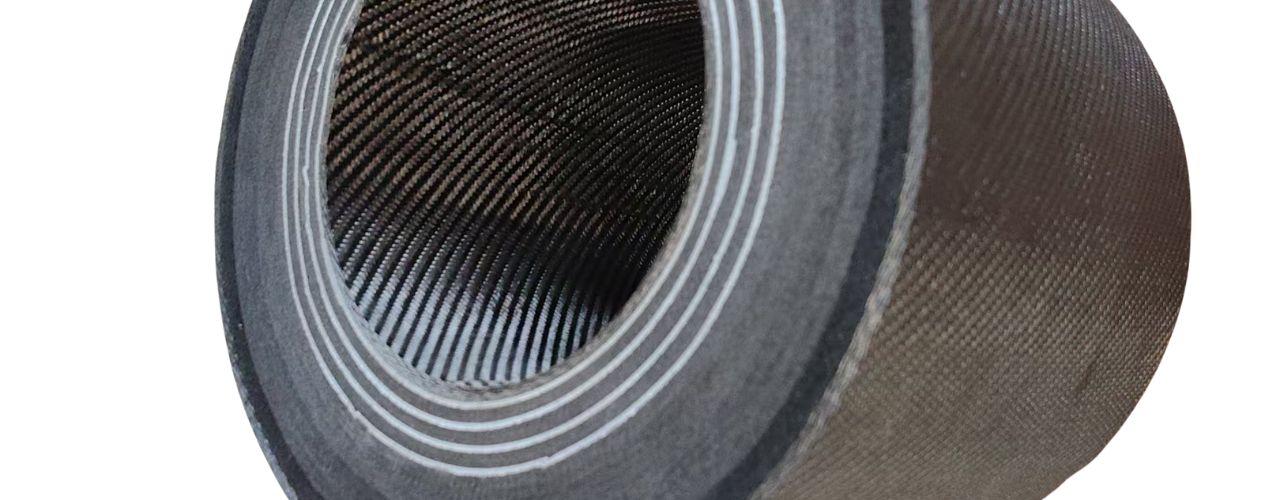Carbon fiber graphite soft felt and rigid felt are both commonly used in high temperature heat field heat insulation materials, they have high temperature resistance, low density, low thermal conductivity, etc., but there are also differences between the two.
Process and product characteristics of carbon fiber graphite soft felt
Carbon fiber graphite soft felt is generally made of rayon fiber, PAN fiber and other raw silk first through the non-woven process to make felt, and then through the impregnation (mainly rayon-based need to be impregnated), pre-oxidation, carbonization, graphitization, cutting, and ultimately get the finished product.
Graphite soft felt molding is mainly in the front end of the non-woven process, non-woven is a series of complex processes together, there are a variety of factors will affect the quality of the finished product. For example: combing fibers into the net, because PAN fiber or rayon fiber is fine, light, drier, in the mechanical action of the equipment is prone to static electricity, affecting the normal operation of the equipment, and therefore need to be added to the way of anti-static agent to reduce static electricity; laying the net, laying the net way has parallel When spreading the net, there are parallel, cross type, combined type, vertical type and other types, the number of layers of the net can reach dozens of layers; needling reinforcement, you can choose different types of felting needles, different types of felting needles, different needling rows, and different times of needling.

These are only a small part of the non-woven process using dry web formation and needling reinforcement; there are many different technical routes for non-woven fabrics.
After the raw silk fibers have been formed, the graphite soft felt is reduced in length, width and thickness compared to the felt before pre-oxidation due to the stepwise reduction of non-carbon elements in the felt. However, the uncut graphite soft felt is still a huge piece of material with a length of up to 40m and a width of up to 1.6m.
According to the application requirements, the graphite soft felt ends and both sides of the uneven part can be cut off, and they also can be cut into the appropriate rectangular soft felt, round soft felt, as well as for the production of rigid felt of various shapes of blanks and so on.
From the view of the main performance indicators, the density of graphite soft felt is only about 0.10g/cm³, which is about one-tenth of the density of water. The fibers themselves are light and fine after graphitization, plus a large number of fibers form small spaces between them, making the density of the soft felt so low.
The thermal conductivity of high purity/efficient rayon-based graphite soft felt is about 0.10-0.15W/m-k at 1150℃, the lower the thermal conductivity, the better the heat preservation performance.
Process and product characteristics of carbon fiber graphite rigid felt
There are two main ways of molding rigid felts: soft felt laminated curing molding and wet molding. The common laminated method of making carbon fiber graphite hard felts uses soft felts as the raw material, and the production process begins with cutting. From the soft felt, several blanks are cut with dimensions slightly larger than the final size of the desired finished rigid felt. After cutting, the blanks are impregnated with resin and other binder materials, and the impregnated blanks are stacked in multiple layers according to the required hard felt thickness.
Impregnation in the production of soft felts is mainly the impregnation of catalysts to make the rayon fibers more stable in the subsequent heat treatment. The impregnation of rigid felts is mainly the impregnation of thermosetting resins. During the subsequent heating and curing process, the liquid resin solidifies, and the multi-layer soft felts are tightly bonded with the resin and molded.
Resin + Carbon Fiber Graphite Soft Felt allows the material to achieve the effect of “1+1>2” in certain properties. The resin-impregnated, multilayered, stacked felt is cured at elevated temperatures, so that it can’t be rolled up like soft felt, but the density and compressive strength of the material are increased.

But this is not yet carbon fiber graphite rigid felt. Because the resin in it contains a lot of elements other than carbon, which need to be removed by carbonization, graphitization and other processes.
Carbon in the resin as a matrix, carbon fiber graphite soft felt as a reinforcing body, they are composite together, and eventually become rigid felt as composite material. Therefore, carbon fiber graphite rigid felt is also called graphite rigid composite felt.
When the small spaces between the felt fibers are filled with resin and cured, the density of the semi-finished product is necessarily higher than that of the raw felt. After carbonization and graphitization, the resin loses hydrogen and oxygen atoms, etc., and the density decreases again, but the carbon left in the resin makes the density of graphite rigid felt still higher than that of raw soft felt. The density of rigid felt is about 0.13-0.25g/cm³.
The area of the rigid felt after graphitization is almost the same as the area of the semi-finished product after curing, and is generally smaller than the raw soft felt before cutting.
Depending on the shape and appearance requirements, the rigid felts also need to be machined, coated or labeled with carbon cloth or graphite paper.
Compared to carbon fiber graphite soft felts, rigid felts have a slightly higher thermal conductivity and are not as insulating as soft felts, but they have a longer service life. For example, the service life of soft felts in single crystal furnaces is about 6 months, while rigid felts are replaced about once every 12 months.

